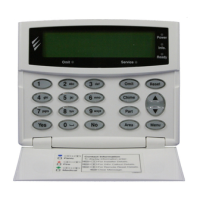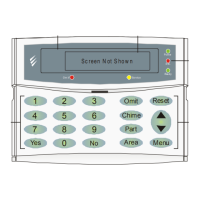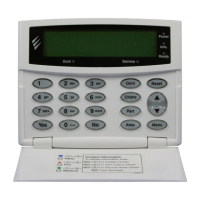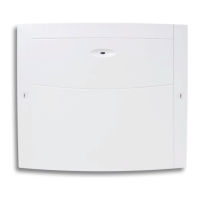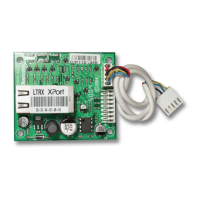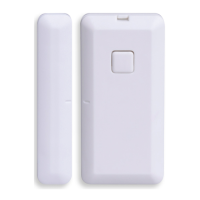Premier 412 & 816 Master User Manual System Program Menus
INS141-5 17
Time Lock Code with Control Timer 1
On: When Control Timer 1 is on, the Access code will not
be accepted by the system. When Control Timer 1 is
off, the Access code will be accepted by the system.
Off: The Access code will be accepted at all times.
Enable Open Reporting
On: The system will report an ‘Open’ condition to the alarm
receiving centre when the Access code is used to
disarm one or more partitions.
Off: The system will not report an ‘Open’ status.
The panel will always send an open signal after an
alarm even if this option is disabled.
Enable Close Reporting
On: The system will report a ‘Close’ condition to the
monitoring station when the Access code is used to
arm one or more partitions.
Off: The system will not report a ‘Close’ condition.
Enable User as Duress Code
On: The Access code will report a ‘Duress’ condition to the
monitoring station when the Access code is used.
Off: The Access code behaves normally.
Activate Door Strike Output
On: When a user Access code is entered, the output type
“Door Strike” is activated for 2 seconds.
Off: The user Access code will not activate the “Door
Strike” output.
Allow Global PA/Fire Silence
On: Both the 2-Wire Smoke detector input and the Auxiliary
PA input (Auxiliary Input programmed as PA) are
treated as “Global” zones, i.e. they are assigned to all
partitions. When an alarm occurs from either of these
inputs the user can silence the alarm for all partitions,
but they can only reset the alarm for the partitions that
are assigned to their code.
Off: When an alarm occurs from either of these inputs the
user will only be able to silence/reset the alarm for the
partitions that are assigned to their code.
User Options 3
User Options 3 can be enabled or disabled for a selected
user so that the level of access to the system may be
altered. The following options are available:
Allow Engineer Code Programming
On: The Access code can access User 00 (Engineer) in the
Program New Users menu (menu 80).
Off: The Access code cannot access user 00 in the
Program New Users menu.
Allow NVM Locking
On: The Access code is allowed to lock/unlock the NVM
(providing “Allow Engineer Programming” is enabled).
Once the NVM is locked the “Load Defaults” jumper
pins on the main control panel are disabled, thus
preventing the panel from being defaulted.
Off: The Access code cannot lock/unlock the NVM.
Allow Engineer Programming
On: The Access code can access the Engineer
programming menus.
Off: The Access code cannot access the Engineer
programming menus.
Allow Test Call Transmission
On: The Access code can perform a test transmission to
the monitoring station (menu 92, see page 19).
Off: The Access code cannot perform a test transmission.
Allow Alarm/Fault Acknowledgement
On: The Access code can be used to acknowledge and
reset alarms and service faults.
Off: The Access code cannot be used to acknowledge and
reset alarms and service faults.
Allow User Programming
On: The Access code can access the user program menus
(menu 90 - 96).
Off: The Access code cannot access the user program
menus.
Allow User Code Programming
On: The Access code can access users 01 to 31 in the
User programming menus (menus 80 - 83).
Off: The Access code cannot access user 01 to 31 in the
User programming menus.
Local Partition Access Only
On: The Access code can only be used to arm and disarm
the partitions that are assigned to the remote keypad.
For example, if the user is assigned to all four
partitions and they use a remote keypad that is only
assigned to Partition 1, they will only be permitted to
arm and disarm Partition 1 at that particular remote
keypad.
Off: The Access code can be used at any remote keypad
(Global Access).
User Text (LCD Only)
If the system is fitted with either a Premier LCD or LCDL
remote keypad you can assign up to 8 characters of text to
each user. This text is used when viewing the system Event
Log, see page 13. User text is programmed in a similar way
to mobile phones. Characters are selected by pressing the
corresponding key the appropriate number of times (to
select a character on the same key, press
to move the
cursor along). For details on entering text, see page 14.
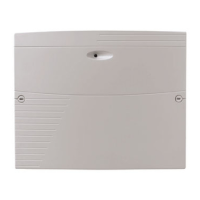
